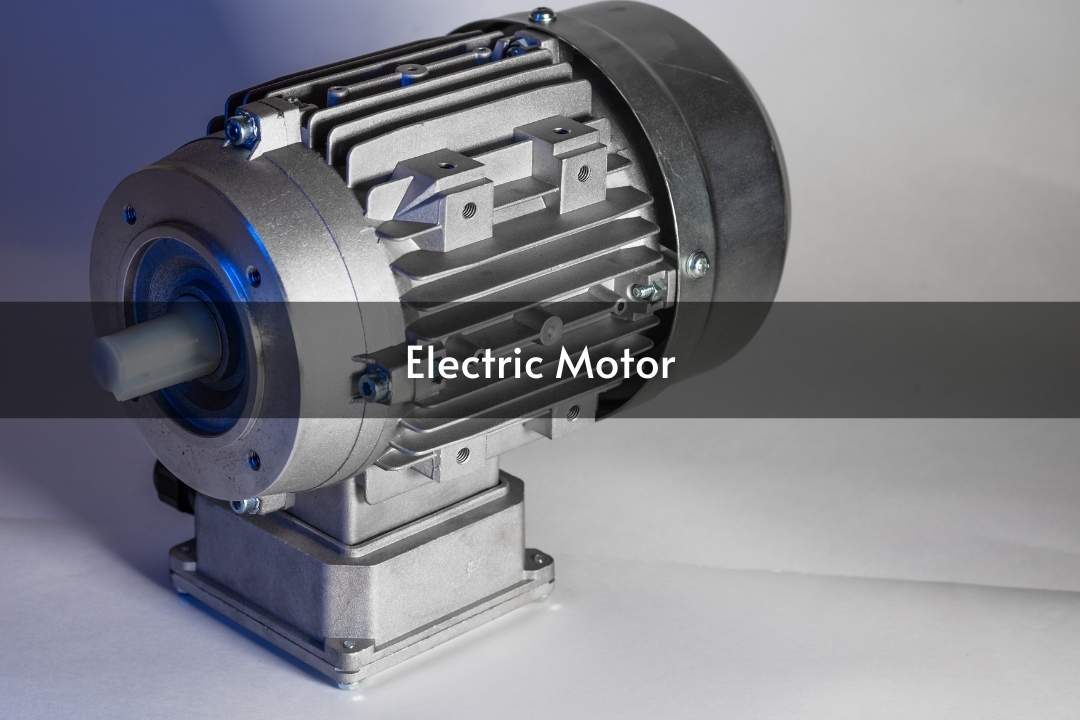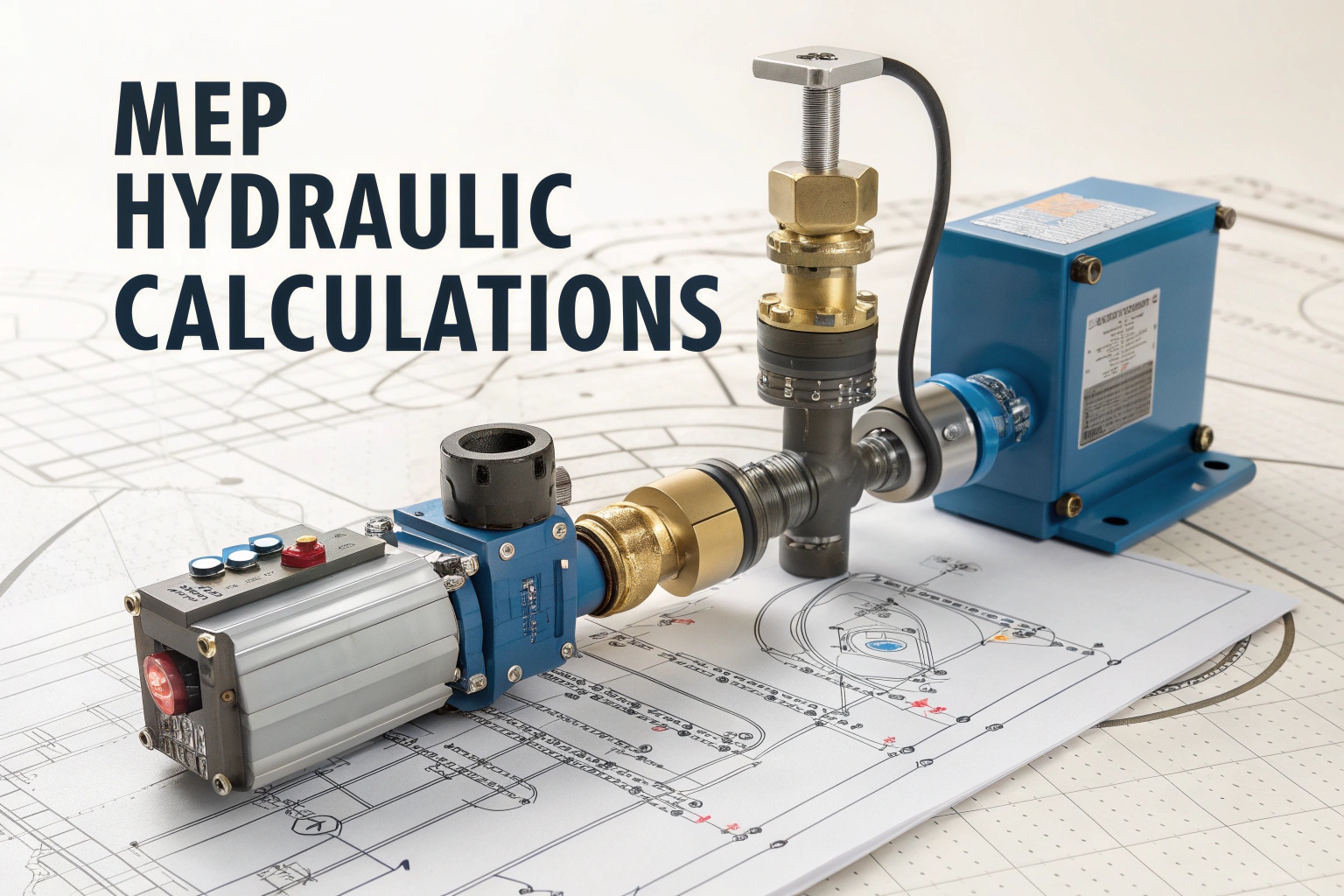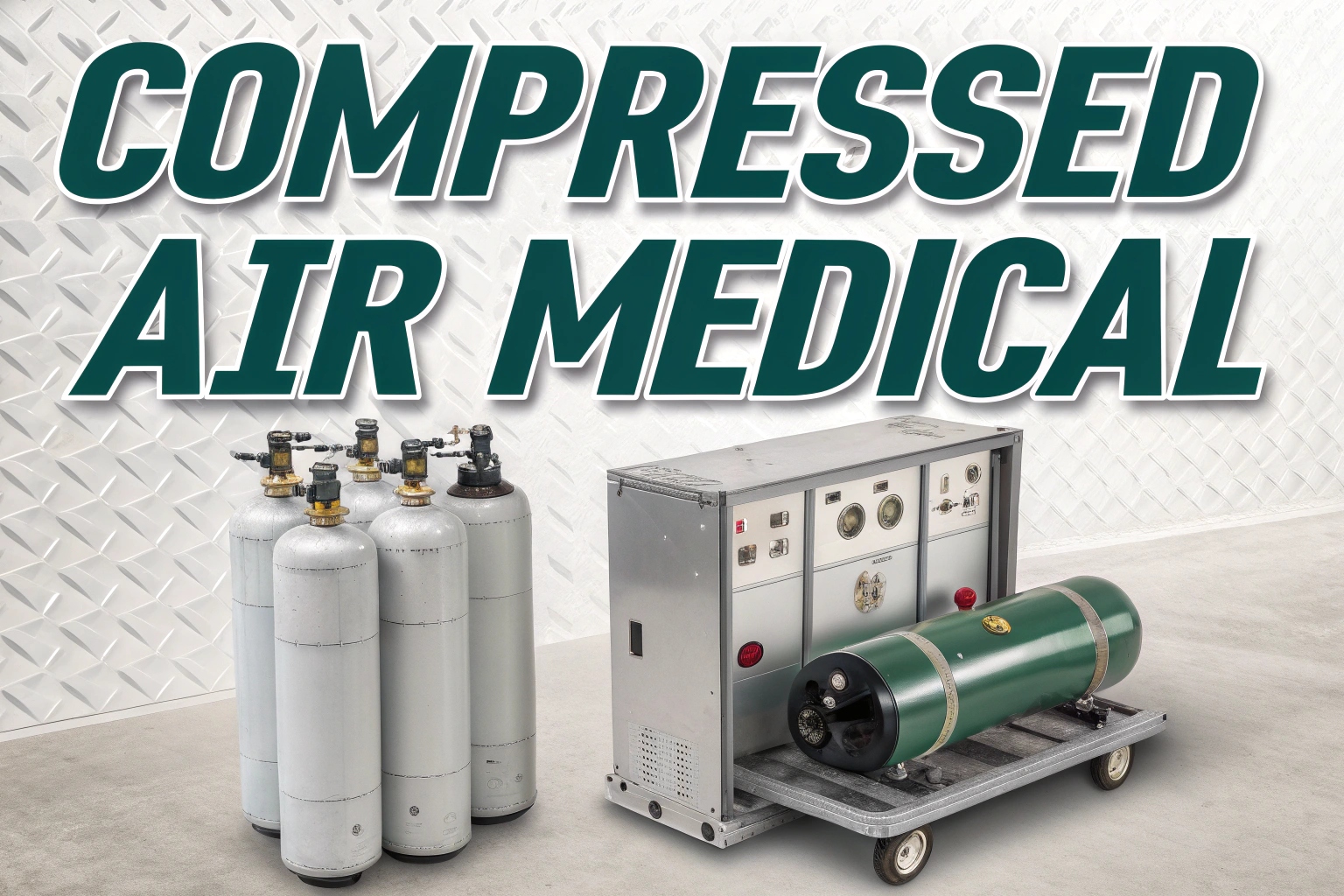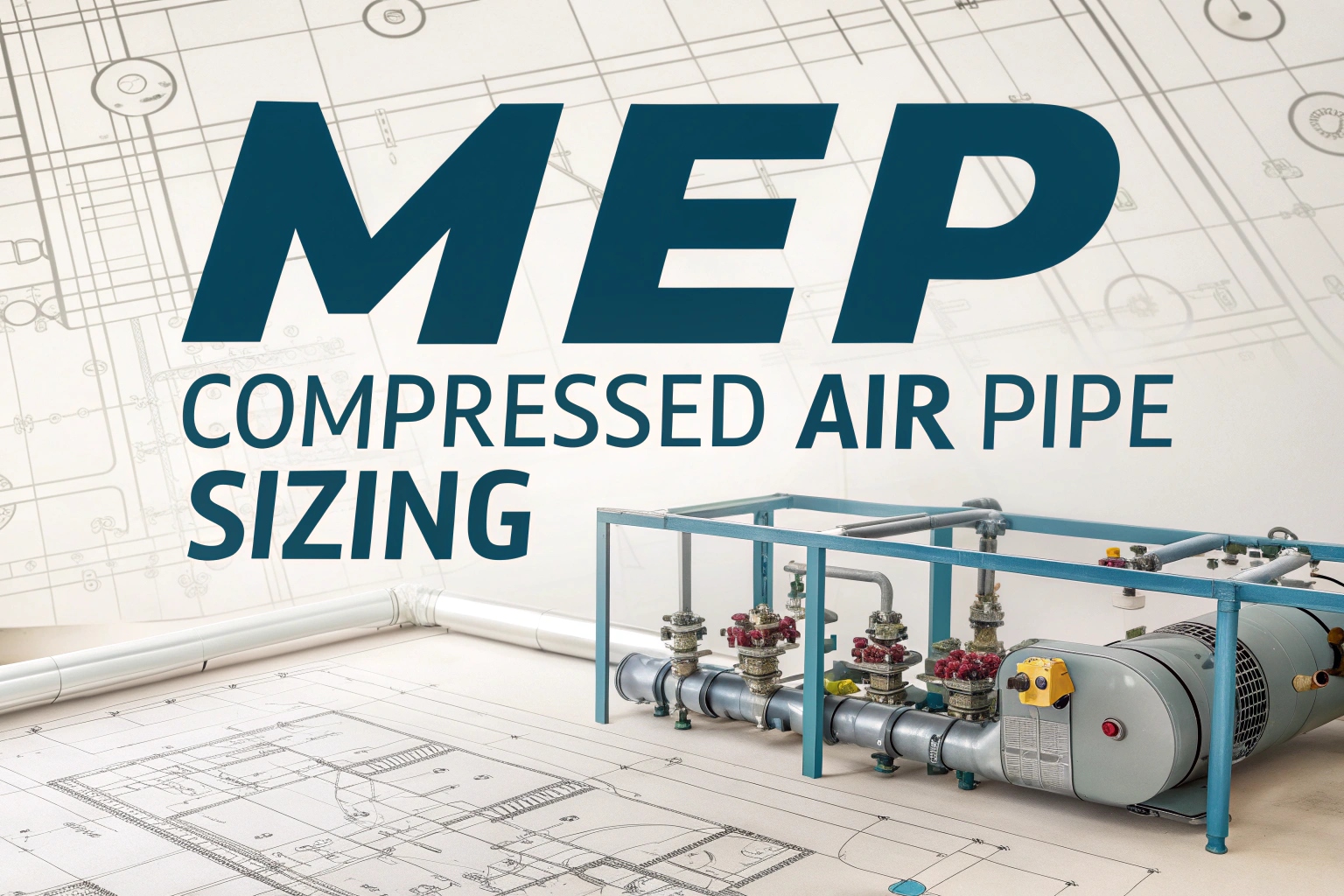An electric motor is a device that changes electrical energy into mechanical energy using electromagnetic effects. It creates mechanical torque by having current-carrying conductors interact with a magnetic field at right angles. Different types of electric motors arrange these conductors and the magnetic field in various ways, allowing control over torque, speed, and position. In this article, we will explore the principle of electric motors, their types, applications, benefits, and more to help you understand them better.
What is an Electric Motor?
An electric motor is a machine that changes electrical energy into mechanical energy. It works by using electrical current in a wire to create a magnetic field, which produces torque on the motor shaft. While an electric generator is similar in design, it works the other way around by changing mechanical power into electrical power.
You can power electric motors with either direct current (DC) sources, like batteries or rectifiers, or alternating current (AC) sources, such as power grids, generators, or inverters. You can classify electric motors based on their power supply type, intended use, construction, and output type. They can be DC or AC, brushless or brushed, and operate on three-phase, two-phase, or single-phase power. Some motors are designed for radial or axial flow and may use liquid or air for cooling.
Standard electric motors are common in industries and are used in many applications, such as blowers, pumps, industrial fans, machine tools, power tools, household appliances, disk drives, and vehicles. Small motors also appear in devices like electric watches. In some cases, like regenerative braking in traction motors, electric motors can act as generators to save energy that would otherwise get lost as heat and friction.
Construction of an Electric Motor
Electric motors have two main parts: the stator and the rotor. The stator stays still, while the rotor spins. There are also two important electrical parts: the field magnets and the armature. One part connects to the stator, and the other connects to the rotor, forming a magnetic circuit.
Field magnets create a magnetic field that works with the winding. These magnets can be permanent or electromagnets. Usually, the field magnets attach to the stator, and the winding attaches to the rotor, but this can change in some motors.
Electric Motor Bearings
Bearings hold the rotor in place and let it spin smoothly. The motor housing supports these bearings.
Electric Motor Rotor
The rotor is the moving part that produces mechanical power. It usually has conductors that carry current. This current interacts with the stator’s magnetic field to create rotational force on the shaft. In some motors, the rotor can have permanent magnets, with the conductors in the stator. Using permanent magnets can improve efficiency at different power levels and speeds.
The gap between the rotor and stator allows the rotor to spin. The size of this gap greatly affects the motor’s performance. A smaller gap is better because a larger gap can lower efficiency and power factor. A bigger gap increases the current needed and decreases the power factor. However, making the gap too small can cause mechanical problems, extra losses, and more noise.
The motor shaft goes through the bearings to the outside of the motor, where it connects to a load. This setup creates an overhung load because the force acts beyond the outer bearing.
Electric Motor Stator
The stator surrounds the rotor and usually holds the field magnets, which can be electromagnets or permanent magnets. These magnets create a magnetic field that interacts with the rotor winding to produce force. The stator’s iron core consists of many thin, insulated metal sheets, called laminations, to reduce energy losses.
Lamination helps cut down on energy losses that occur with a solid core. In resin-packed motors, often found in appliances like air conditioners and washing machines, plastic helps reduce vibrations and noise.
Electric Motor Armature
The armature includes wire wrapped around a ferromagnetic core. When current flows through the wire, it creates a magnetic field that pushes on the armature, making the rotor turn and producing mechanical output. The windings are coils of wire typically wrapped around a soft, laminated iron core, creating magnetic poles when current is applied.
Electric motors can be non-salient or salient-pole types. In salient-pole motors, both the stator and rotor have cores with poles that stick out. Each pole has wire wound around it, which creates north or south poles when current flows. Non-salient-pole motors (also called round-rotor or distributed field motors) have a cylindrical core with evenly spaced windings. Alternating current in these windings creates continuously rotating magnetic poles. Shaded-pole motors are a variation that has windings covering part of each pole, causing a delay in the magnetic field for that pole.
Electric Motor Commutator
A commutator is a rotary switch that supplies alternating or direct current to the rotor. It periodically reverses the current flow in the rotor winding as the shaft rotates. The commutator consists of a cylinder with several metal segments on the armature. Brushes made of soft conductive material, like carbon, press against the commutator. These brushes maintain electrical contact with the rotating segments, delivering current to the rotor.
The rotor windings connect to the commutator segments, which reverse the current direction every half turn (180°) of the rotor. This keeps the torque on the rotor in a consistent direction. Without this reversal, the torque direction would switch with each half turn, causing the rotor to stall. Because they are less efficient, commutator-based motors have mostly been replaced by brushless DC motors, induction motors, and permanent magnet motors.
How an Electric Motor Works
Electric motors change electrical power (AC or DC) into mechanical power to create movement. This happens through the interaction of the electrical current in the windings and a magnetic field. When the current gets stronger, the magnetic field also gets stronger. According to Ohm’s Law (V = R*I), if the resistance goes up, the voltage must increase to keep the current steady.
Things to Think About When Choosing Electric Motors
When you choose an electric motor, keep these factors in mind:
- Voltage: Check if the motor will plug into a wall socket or if it needs batteries. For wall sockets, the standard voltage is usually 230VAC or higher for industrial use.
- Frequency: In the United States, motors usually run at 60Hz. If you plan to use the motor outside the U.S., you may need one that operates at 50Hz.
- Speed: Think about the speed range you need for the motor. If you need exact or adjustable speeds, make sure the motor has the right control options.
- Torque: Determine the starting torque your application requires. Also, check if the torque will change while the motor runs. Consider the maximum torque needed in the worst case.
- Power: Make it clear if the motor will operate at its highest power rating.
- Duty Cycle: Know the motor’s duty cycle. For continuous use, ensure it can run for long periods without overheating. For short, intermittent use, a smaller motor with similar torque and speed may work if it can cool down completely between uses.
- Life Cycle: For applications that run only sometimes, Universal or DC motors might be suitable. However, these usually last less long and need more maintenance. For continuous use over long periods, consider brushless DC or AC motors, as they generally last longer and need less maintenance.
Types of Electric Motors
DC Motors
DC motors turn electrical energy from direct current into mechanical energy using magnetic fields. They can change the direction of the current to operate. Common in toys and tools, they come in various sizes and can be powered from standard direct current sources. They can be controlled for speed using voltage changes.
12V Motors
A 12V DC motor is small, affordable, and suitable for many uses. It operates efficiently at lower voltages, ideal for battery use. Most 12V motors are brushless, using sensors instead of brushes, making them simpler and more reliable.
Brushless Motors
Brushless motors, or BLDC motors, use electronic controllers instead of brushes for operation. They provide high efficiency and are used in devices like printers, power tools, and vehicles. They come in different designs, such as out-runners and in-runners.
Stepper Motors
Stepper motors move in precise steps based on electrical pulses. They maintain their position without needing feedback, making them ideal for applications requiring accuracy. These motors have electromagnets that activate in sequence to rotate the rotor step by step.
AC Motors
AC motors use alternating current and consist of a stator and a rotor. The stator generates a rotating magnetic field, while the rotor produces its magnetic field. AC motors can be synchronous or induction types.
1HP Electric Motors
A 1HP motor produces about 746 watts and is used in applications like vehicles. They can be either AC or DC types.
2HP Electric Motors
Similar to 1HP motors, 2HP motors provide about 1.49 kW of power and are used in industrial fans and boat propellers.
Three-Phase Motors
These AC motors are induction motors that use three-phase power. They consist of a stator with three coils and a rotor that generates mechanical energy. They have cooling systems to manage heat.
Single-Phase Motors
Single-phase motors convert electrical energy into mechanical energy using two wires. They are commonly used in homes and offices for appliances and HVAC systems.
Industrial Motors
These motors convert electrical energy to mechanical energy for various applications. They come in types like AC induction and DC synchronous motors.
Servo Motors
Servo motors provide precise control of position and speed. They consist of a motor paired with a sensor and controller, commonly used in CNC machines and robotics.
Benefits of Electric Motors
- Electric motors cost less than fossil fuel engines, but they have similar horsepower ratings.
- Electric motors have moving parts, which helps them last longer.
- When you maintain electric motors properly, they can last up to 30,000 hours.
- Electric motors are very efficient, and their automatic control lets them start and stop on their own.
- They are also good for the environment because they do not release pollutants.
Drawbacks of Electric Motors
- Big electric motors are hard to move, and you need to consider the right current and voltage supply.
- In some cases, you must spend a lot of money to expand power lines in remote areas where electricity is not available.
- When you use a high-horsepower motor with a low load factor, it can cost a lot to operate per hour.
Safety Rules for Electric Motors
- Keep the work area bright and clean at all times.
- Keep young children away from the work area because motors have many small parts.
- Always wear personal protective equipment (PPE) since motors rotate very fast.
- Never leave the motor unattended.
- If you leave a battery shorted for a long time, it may rupture or explode.
- Do not exceed the rated operating voltage, as high voltages can cause overheating and fires.
- Only qualified personnel should operate the motors.
Electric Motor Maintenance
To keep electric motors in good condition, follow these steps:
Cleaning and Routine Maintenance
Every organization should set up a regular cleaning routine for their motors. Cleaning a motor often helps it last longer and work better. Keeping the motor free from dust, grease, and other debris is important for it to run smoothly.
Motor Lubrication
Using too much lubricant can cause problems inside the motor. However, proper lubrication is necessary for peak performance. Different motors require different amounts of lubrication. Lubricating too early or too late can cause parts to wear out faster. Manufacturers usually recommend specific lubricants for their motors.
Bearing Inspection
Bearings are the parts that wear out the most in motors. Misalignment can put extra stress on them, so keeping the motor properly aligned is important. Using the wrong lubricant can also cause bearings to wear out quickly. If a motor overheats, it often signals a problem with the bearings.
Reducing or Stopping Vibrations
All motors vibrate a little, but too much vibration can cause serious damage. If the motor vibrates too much, turn it off immediately. Common causes of excessive vibration include misalignment, damaged bearings, or belts that are too tight.
Rotor and Stator Inspection
The rotor and stator are important motor parts. Check the gaps around them and measure the clearance. The proper gap depends on the motor and bearing design.
Recording Maintenance
Keeping track of all maintenance work helps you monitor how long the motor will last and when it might need repairs. Record every inspection, bearing change, belt adjustment, and lubrication to plan future maintenance and control costs better.
Conclusion
Electric motors change electrical energy into mechanical energy. They mainly work by using the interaction between the motor’s magnetic field and the electrical current in a coiled wire, creating force as torque on the motor shaft. The rotor and stator are the key parts of a motor. Motors can run on either alternating or direct current. There are different types of electric motors, like induction, servo, three-phase, and industrial motors. These motors are commonly found in electric vehicles, air conditioners, ships, and hydraulic machines.
FAQs
What is the principle of an electric motor?
An electric motor works by passing electric current through a conductor placed in a magnetic field. This creates a force that moves the conductor, producing mechanical energy.
What is a motor and what are its types?
There are two main types of motors: AC motors and DC motors. AC motors allow easy speed control and need less power to start. DC motors are common because they are cheaper for low-power uses and easy to install.
What is a motor used for?
Motors provide power for many industries. Large motors are used in ships, pipelines, and other big systems, with power over 100 megawatts. Motors are also used in fans, pumps, tools, household appliances, vehicles, and disk drives.
How do motors work?
A motor works with a magnet that has a center axis. When outer magnets rotate, the north and south poles attract and repel each other, causing the center magnet to spin.
Read More – Centrifugal Switch: How It Powers Your Electric Motors Efficiently











